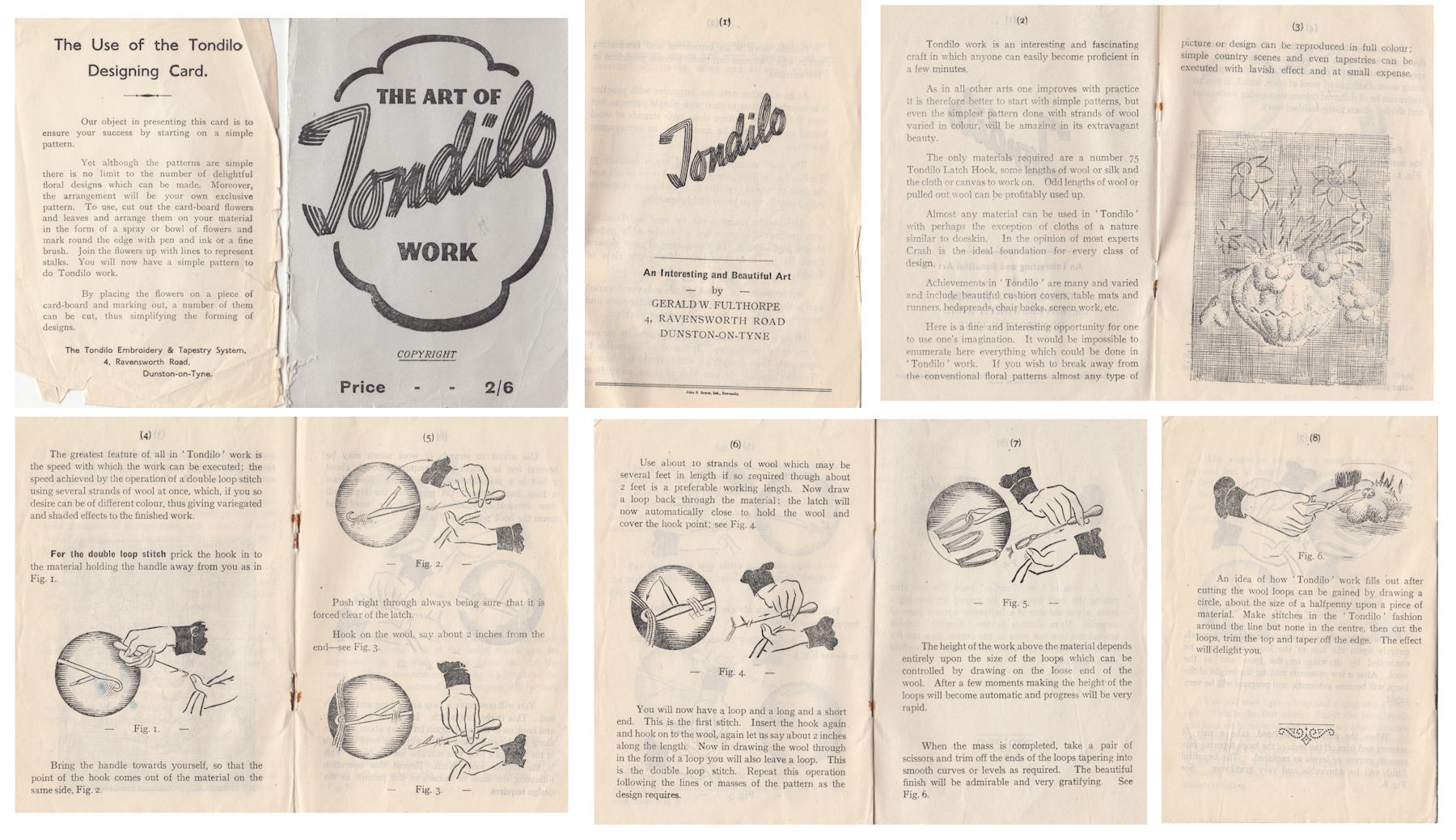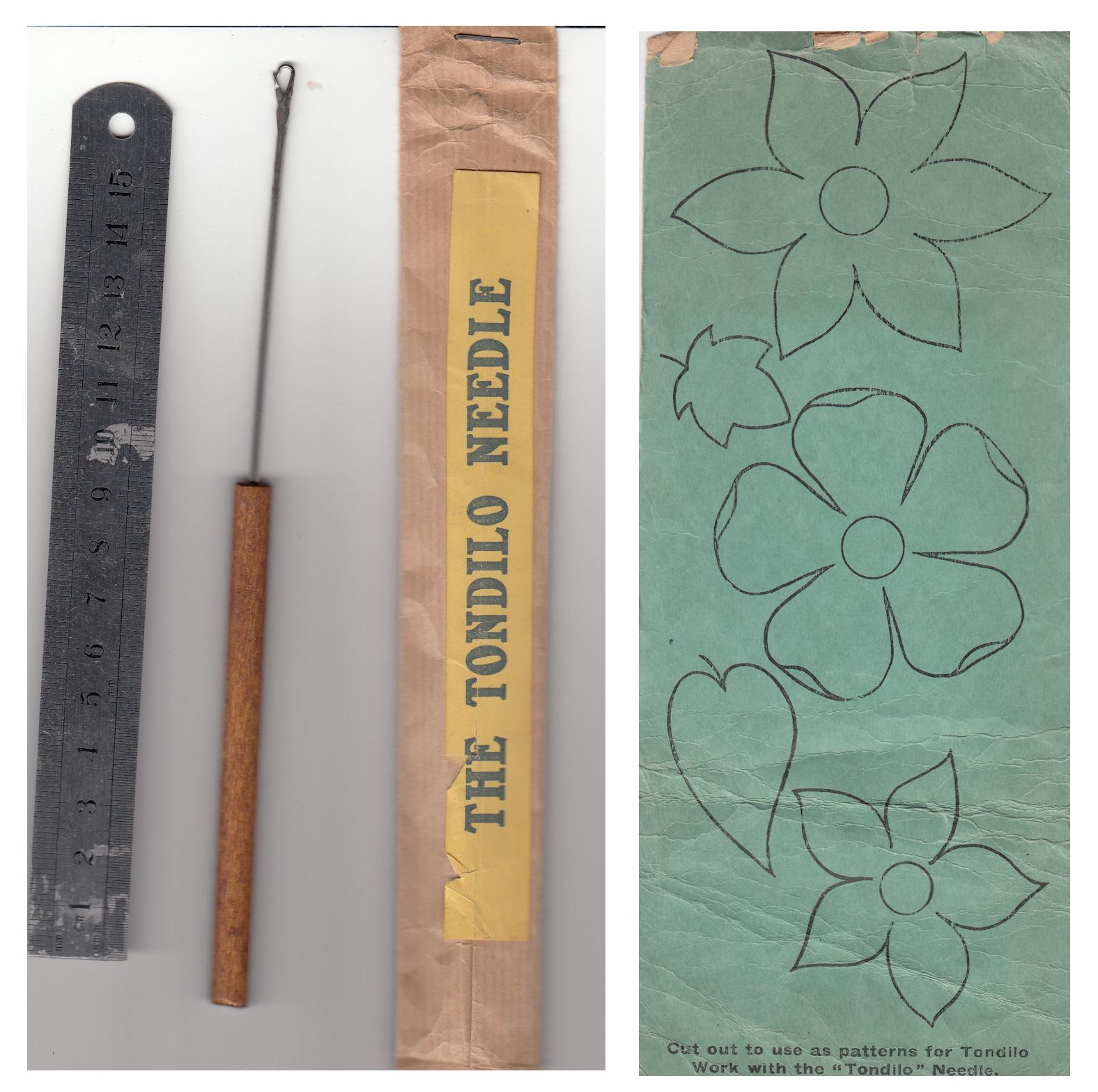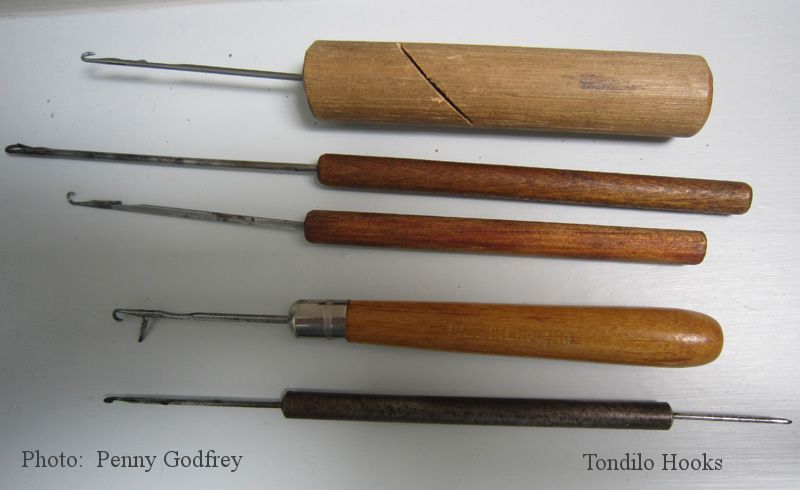
RUG-MAKING HISTORY - TONDILO WORK
Another diversion from latch hooking is "Tondilo" work or "The Tondilo Embroidery and Tapestry System". This is a form of latch-hooking on a miniature scale with a sculpted finish. Beause I can't find anything online about this form of needlework, I've transcribed the leaflet. It's hard to date this leaflet. "Tondilo" is the Esperanto word for scissors (verb: tondi - to cut with scissors). Esperanto was created in the late 1870s and early 1880s and became more popular in the early-to-mid twentieth century. Meanwhile, the leaflet price is UK pre-decimal - no later that February 1971. The recommended base fabic is "Crash," which is a general term for arough or rugged plain-weave fabric made from strong, but irregular, yarns including mixes of linen and jute.
TONDILO - An Interesting and Beautiful Art by Gerald W. Fulthorpe, 4, Ravensworth Road, Dunston-on-Tyne
Tondilo work is an interesting and fascinating craft in which anyone can easily become proficient in a few minutes. As in all other arts, one improves with practice. It is therefore better to start with simple patterns, but even the simplest pattern done with strands of wool varied in colour, will be amazing in its extravagant beauty.
The only materials required are a number 75 Tondilo Latch Hook, some lengths of wool or silk and the cloth or canvas to work on. Odd lengths of wool or pulled out wool can be profitably used up. Almost any material can be used in Tondilo with perhaps the exception of cloths of a nature similar to doeskin. In the opinion of most experts Crash is the ideal foundation for every class of design.
Achievements in Tondilo are many and varied and include beautiful cushion covers, table mats and runners, bedspreads, chair backs, screen work, etc.
Here is a fine and interesting opportunity for one to use one’s imagination. It would be impossible to enumerate here everything which could be done in “Tondilo” work. If you wish to break away from the conventional floral patterns almost any type of picture or design can reproduced in full colour; simple country scenes and even tapestries can be, executed with lavish effect and at small expense. The greatest feature of, all in “Tondilo” work is the speed with which the work can be executed; the speed achieved by the operation of a double loop stitch using several strands of wool at once, which, if you so desire can be of different colour, thus giving variegated and shaded effects to the finished Work.
For the double loop stitch prick the hook in to the material holding the handle away from you as in Fig. I. Bring the handle towards yourself, so that the point of the hook comes out of the material on the same side, Fig 2. Push right through always being sure that, it is forced clear of the latch. Hook on the wool say about 2 inches from the end see Fig. 3. Use about 10 strands of wool which may be several feet in length if so required though about 2 feet is a preferable working length. Now draw a loop back through the material: the latch will now automatically close to hold the wool and cover the hook point; see Fig. 4.

You will now have a loop and a long and a short end. This is the first stitch. Insert the hook again and hook on to the wool, again let us say about 2 inches along the length. Now in drawing the wool through in the form of a loop you will also leave a loop. This is the double loop stitch. Repeat this operation following the lines or masses of the pattern as the design requires.
The height of the work above the material depends entirely upon the size of the loops which can be controlled by drawing on the loose end of the wool. After a few moments making the height of the loops will become automatic and progress will be very rapid.
When the mass is completed, take a pair of scissors and trim off the ends of the loops tapering into smooth curves or levels as required. The beautiful finish will be admirable and very gratifying. See Fig. 6. An idea of how “Tondilo” work fills out after cutting the wool loops can be gained by drawing a circle, about the size of a halfpenny upon a piece of material. Make stitches in the “Tondilo” fashion around the line but none in the centre, then cut the loops, trim the top and taper off the edge. The effect will delight you.

The Use of the Tondilo Designing Card.
Our object in presenting this card is to ensure your success by starting on a simple pattern. Yet although the patterns are simple there is no limit to the number of delightful floral designs which can be made. Moreover, the arrangement will be your own exclusive pattern. To use, cut out the cardboard flowers and leaves and arrange them on your material in the form of a spray or bowl of flowers and mark round the edge with pen and ink or a fine brush. Join the flowers up with lines to represent stalks. You will now have a simple pattern to do Tondilo work. By placing the flowers on a piece of card-board and marking out, a number of them can be cut, thus simplifying the forming of designs.
The Tondilo Embroidery & Tapestry System,
4, Ravensworth Road,
Dunston-on-Tyne.

Rug-hooking enthusiast Penny Godfrey has collected 5 different Tondilo hooks over the years. Two have thin wooden handles, one has a chunkier wood handle like the straight latch hook, and says "For use with Teazle wools", and one is metal with a needle eye at the other end. Her most recent find has a really chunky wooden handle, with a diagonal slot across the wood, which she presumes is for the wool to slide through. The latch hooks are all the same and not to be confused with the one for mending tights! Teazle wools were made by Patons and Baldwins who also made a little wire brush for brushing out the wool. Thismust have been incredibly fine wool in order to get 12 strands through the latch hook. Penny believes Tondilo is derived from Berlin work. In America there is a rug making technique called Waldebro, which is the same principle. Tufted American Indian crafts also appear similar.
